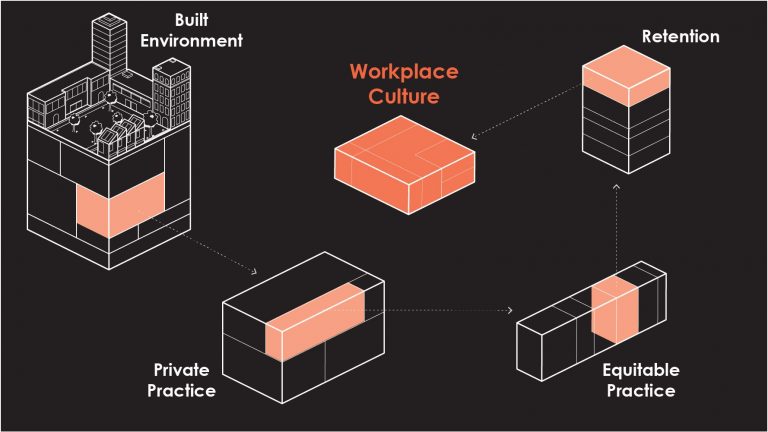Published on February 6, 2021

Originally written by Jake Minden, MLA Candidate 2021.
In my final year of the MLA program, I’ve been given the opportunity to participate in the Applied Research Consortium (ARC), a new program within the college that links graduate students, faculty members, and firms to research a topic that aligns student interest, faculty expertise, and firm needs. I am leading a year-long research project focused on racial equity within built environment design practice. More specifically, I am looking at how perceptions of firm culture within private practice affect employee retention. With the help of a few advisors including assistant professor of Landscape Architecture, Catherine De Almeida, I have done a literature review, generated research questions, and scoped out the remaining work. I would like to share some lessons I have learned.
- The Built Environment is Racist and so is Design Practice— The built environment is a physical manifestation of our nation’s cultural and political history, and that history is racist. Some well-known examples of racism in the built environment include exclusionary redlining policies and the targeted siting of urban renewal projects, toxic industrial sites and waste sites disproportionately located within communities of color, oppressive architecture of low-income housing projects, and inequitable urban economic development policies.
If our history is racist, and our built environment is racist, then the institutions responsible for designing the built environment must be racist too. This is not a revelatory idea. Racial inequity within built environment design professions is relatively well documented and a regular topic of study, especially in contemporary research. This is partly evidenced by the disproportionately high number of white students in design school and white employees in design practice. The pursuit of anti-racist design practice benefits from an acknowledgment and understanding of existing institutional racism. It is important to align our current reality before we can collectively do better.
Continue reading here.
Originally written by Jake Minden, MLA Candidate 2021 for the Applied Research Consortium.